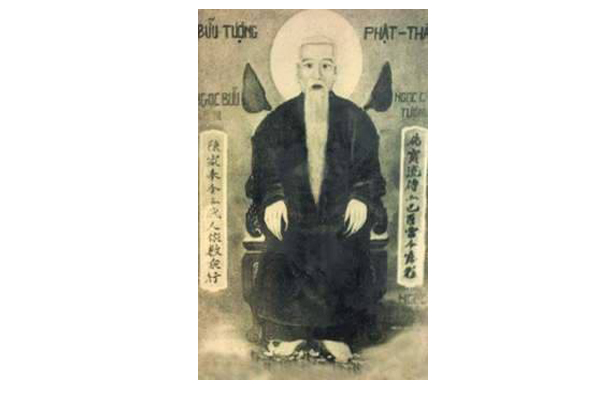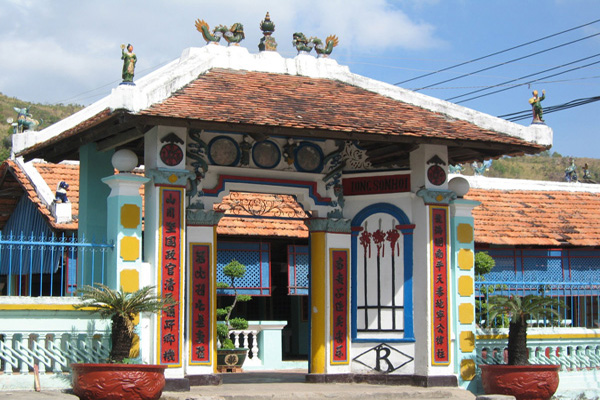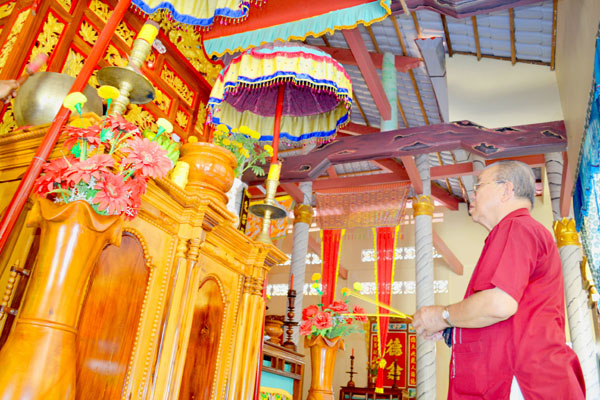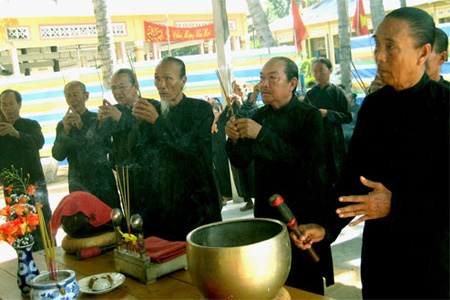Tu An Hieu Nghia (Four Debts of Gratitude) was founded by Ngo Loi (also known as Ngo Vien, Cao Van Do, Bay Do or Nam Thiep) in Ba Isle (An Phu District, An Giang Province) in May 1867. Ngo Loi was born in Mo Cay District,...
Tu An Hieu Nghia (Four Debts of Gratitude) was founded by Ngo Loi (also known as Ngo Vien, Cao Van Do, Bay Do or Nam Thiep) in Ba Isle (An Phu District, An Giang Province) in May 1867. Ngo Loi was born in Mo Cay District, Ben Tre Province. He was a feudal intellectual who participated in the Can Vuong movement (the royalist movement) and the uprising in My Tho and Tien Giang provinces. Wanted by French invaders, he fled to That Son, An Giang Province. Here, he absorbed new ideas from Buu Son Ky Huong and became a disciple of Tay An Buddhist Teacher.
Based on the doctrine and the wav of propagation of Buu Son Ky Huong, Ngo Loi simultaneously spread his belief, cured people, and organized local farmers to reclaim virgin soil and set up hamlets. During the process of stabilizing the followers' lives on Tuong Mount (An Giang Province), Ngo Loi built pagodas and temples to practise rites. He also stepped up the propagation widely in That Son and its vicinity. It did not take him a long time to receive many followers. Ngo Loi was called by a respected name, Duc Bon Su (the original teacher or founder).

After Ngo Loi passed away on Tuong Mount in 1890, Tu An Hieu Nghia had no one else to succeed to the position. The management was entrusted to his disciples. Not long after that, some of them left That Son to propagate the belief in other regions. Tu An Hieu Nghia was then divided into two systems. One system upheld in villages, namely An Dinh, An Hoa, An Thanh and An Lap in That Son, An Giang Province, is considered the Holy Land of Tu An Hieu Nghia. The followers in these villages are called noi thon believers (believers living inside the hamlets). The other system involves followers in the places where Ngo Loi's disciples spread the belief, such as the provinces of Kien Giang, Ben Tre, Dong Thap, Tien Giang, Can Tho and Ba Ria-Vung Tau). These followers are called ngoai thon believers (believers living outside the hamlets).
The prayer books of Tu An Hieu Nghia contain Duc Bon Su's teachings written in Chinese characters. In addition to the prayer books (teaching the moral standards and worship rituals), Tu An Hieu Nghia has a system of oracles created by the great disciples to concretize the teachings of Duc Bon Su. Because these oracles are written in the six-eight-word distich meter, five-word verse and seven-beat meter to serve the offering rituals and admonish people to cultivate virtue and morals, they have been spread widely and are easy to penetrate deep into the minds of followers.
Similar to Buu Son Ky Huong, the doctrine of Tu An Hieu Nghia embraces Hoc Phat - Tu nhan, the Four Great Debts of Gratitude and religious practice at home. Tu An Hieu Nghia values filial piety above all and does not allow followers to leave their homes and families. There are neither strict commandments nor discrimination among dignitaries and followers of Tu An Hieu Nghia.

During its existence and development, Tu An Hieu Nghia has not advocated the establishment of its administrative organizations. Its founder is called Duc Bon Su; its followers are called Ba Gia. Duc Bon Su is assisted by his great disciples, who are divided into Tro disciples (promoting Duc Bon Su's ideas) and Ganh disciples (taking charge of religious affairs within a group of followers on behalf of Duc Bon Su).
Followers of Tu An Hieu Nghia are grouped into units called ganh. Tu An Hieu Nghia has a total of twenty-four ganh, each of which is headed by a ganh leader. This position is passed from a person to his son or closest disciple, who is knowledgeable about the tenets and prestigious among the followers. He is in charge of religious affairs and the organization of rites within his ganh. He is assisted by deacons including Thong Tin (informing followers of ceremonies and events such as funerals, weddings and sicknesses within a ganh and collecting money and things for charity when necessary), Cu Sy (writing petitions and memorials, chanting prayers, and striking bells and tocsins during ritual services), and Thu Le (preparing tables and chairs, arranging work, and burning and giving incense to the ganh leader in ritual services).
Each ganh leader is also assisted by a management board which helps him with organizing worship rites, restoring and repairing pagodas and temples, managing finances and doing charity.

Similar to Buu Son Ky Huong, each new follower of Tu An Hieu Nghia is given a Long Phai, which is considered his certificate of membership and inseparable talisman.
The places of worship of Tu An Hieu Nghia include pagodas, communal houses, temples and altars in households. Different from Buddhist pagodas, pagodas of Tu An Hieu Nghia are not places for monks who have left their homes for religious practice. Instead, they are places where ritual services of Tu An Hieu Nghia are held. They are also places for treatment.
After the liberation of South Vietnam, some organizations of Tu An Hieu Nghia dissolved. Religious activities are still conducted as usual in households and places of worships. Important ceremonies and events are still held under the instruction of ganh leaders. The twenty-four ganh are still in operation.
According to statistics, in 2008, Tu An Hieu Nghia had nearly 80,000 followers, concentrated in southwest provinces such as An Giang, Dong Thap, Can Tho, Vinh Long, Tra Vinh, Tien Giang, Kien Giang and Ba Ria-Vung Tau. Among them, An Giang is the center of the religion. In 2006, the People's Committee of An Giang Province granted the License No. 262/GCN-TGT dated August 4, 2006, to Tu An Hieu Nghia. This religion raises high its principle: "Following Buddha, cultivating humanity, the Four Great Debts of Gratitude, and national harmony and unity."



